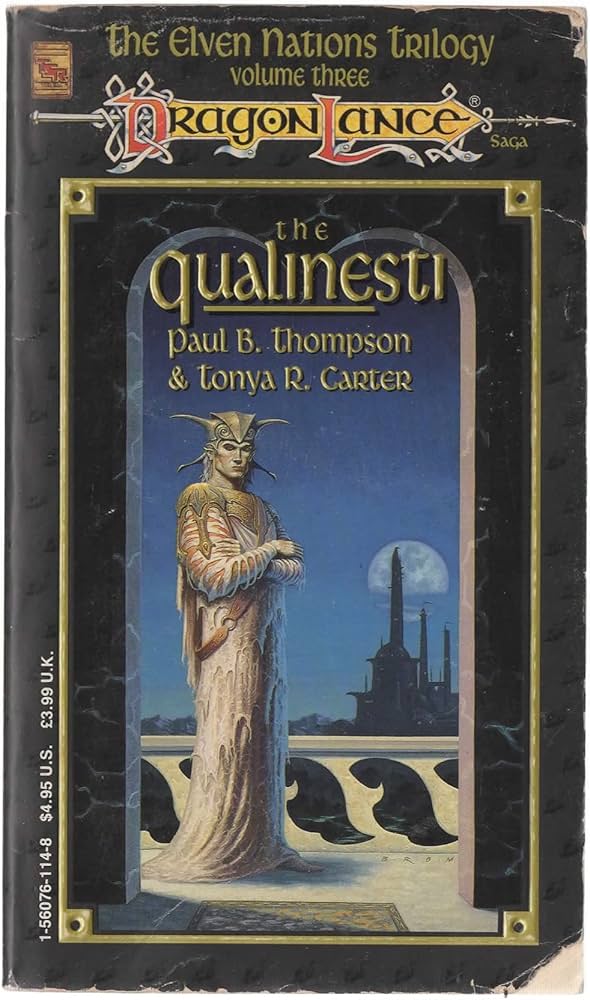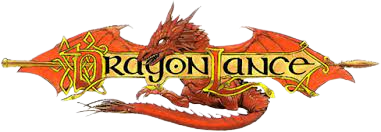The Qualinesti

Table of Contents
ToggleOverview
The Qualinesti concludes the sweeping story begun in Firstborn and The Kinslayer Wars, chronicling the aftermath of civil war and the rise of the Qualinesti elven nation. Where Firstborn was about division, and Kinslayer Wars was about conflict, The Qualinesti is about rebirth.
Kith-Kanan, now an aging and revered leader, must guide his people in the creation of a new society, one that embodies the ideals he fought for—but which now faces internal unrest, political tension, and lingering trauma from decades of war with Silvanesti.
This novel is less a tale of battles, and more a reflection on leadership, vision, and legacy—an emotional and thought-provoking finale to one of Dragonlance’s richest trilogies.
Main Character: Kith-Kanan
- Now a veteran king and elder statesman, Kith-Kanan continues to carry the burdens of civil war and nation-building.
- Torn between honoring tradition and fostering change, he seeks to build a realm that can withstand time, prejudice, and adversity.
- Haunted by the ghosts of the past, he must also contend with new enemies within his own ranks.
Supporting Characters
- Ellathan – A young noble and rising political figure who questions Kith-Kanan’s authority, seeing him as out of touch. Represents the new generation.
- Solostaran – A trusted advisor and future patriarch of the Qualinesti royal line (and ancestor of Porthios, Laurana, and Gilthas). Begins to take a more active role in governance.
- Silvanesti Emissaries – Representatives from the east who attempt to repair relations, but may have their own agendas.
- Human Allies and Traders – Increasing presence in Qualinesti society, stoking tension among traditionalist elves.
Setting
- Set in the freshly built city of Qualinost, the capital of the newly formed Qualinesti nation.
- The story explores the political structure, architecture, and philosophy of this new realm—more open and progressive than Silvanesti, but still fragile and under construction.
- Flashbacks and personal memories occasionally return to the scars of the Kinslayer War, coloring decisions made in the present.
Plot Summary
A Nation Forged in Grief
With the war over and the Qualinesti people fully separated from their Silvanesti cousins, Kith-Kanan turns his focus to building a lasting society. But peace is tenuous. Factions arise:
- Elves who miss the grandeur of Silvanesti and want to reestablish the old ways.
- Others who fear human influence and resent Kith-Kanan’s tolerance.
- A younger generation who never fought the war but now live with its consequences.
The Price of Peace
Kith-Kanan is confronted by political challenges and civil unrest, even within his own council. He must:
- Settle disputes over land and inheritance.
- Decide how much power to grant non-elves and immigrants.
- Protect the fragile realm from internal sabotage.
Amid these struggles, Kith also deals with personal loss, aging, and his legacy as a leader who divided his race—but also gave part of it a chance to survive.
The Final Crisis
A conspiracy arises among traditionalist elves who believe Kith-Kanan has betrayed elven purity. An attempted coup rocks the capital, and Kith is gravely injured in the process.
He survives long enough to reaffirm his vision, passing leadership to those who understand both the past and the necessity of change—notably Solostaran, who begins to emerge as a new voice of reason.
Kith-Kanan’s Final Days
In a quiet and emotional conclusion, Kith-Kanan reflects on his life, his choices, and what it means to lead a people into an unknown future. He dies peacefully, surrounded by the city and ideals he helped build.
The book ends with Qualinost stronger—but still uncertain, and the first generation of Qualinesti looking toward the future with hope tempered by memory.
Themes
- Legacy and Leadership – The book is a meditation on what it means to create something that will outlast you, and the sacrifices required to do so.
- Cultural Rebuilding – How do a people forge identity after civil war? What traditions are kept, and what must be discarded?
- Progress vs. Tradition – A recurring struggle between Kith-Kanan’s vision of unity and adaptation, and the nostalgia of the old ways.
- Mortality and Memory – Kith-Kanan’s aging process is central to the narrative, and the novel reflects heavily on what the next generation will remember.
Tone & Style
- Reflective, solemn, and mature, focusing on politics, character, and ideology rather than action.
- Emphasizes dialogue, introspection, and philosophical tension, often through council scenes, personal conversations, and moments of quiet thought.
- While there are bursts of action, the true drama is emotional and cultural.
Reception
The Qualinesti is praised for:
- A poetic and fitting conclusion to the Elven Nations trilogy.
- Giving depth to the founding of one of Dragonlance’s major societies.
- Kith-Kanan’s portrayal as a wise but human leader, facing the twilight of his life with courage and grace.
- Rich world-building of elven government, architecture, and social tension.
Some readers may note:
- The pacing is slow and heavily character-driven.
- Less focus on external threats or fantasy battles—more philosophical and personal.
Still, it’s widely regarded as a vital and resonant part of Dragonlance history.
✦ Final Thoughts
The Qualinesti is a graceful, introspective finale that brings closure to the epic tale of elven division begun in Firstborn. It’s a story of building from ashes, about a people struggling to move forward while still haunted by what was lost—and a leader determined to leave them something better.
Recommended for:
- Fans of elven lore and political world-building
- Readers who enjoy legacy stories and emotionally grounded fantasy
- Anyone invested in the origins of Laurana, Porthios, Gilthas, and the Qualinesti society seen in Chronicles and beyond
“A city of light, born from the shadows of war. A kingdom carved not from stone—but from the heart of a people who chose to begin again.”
